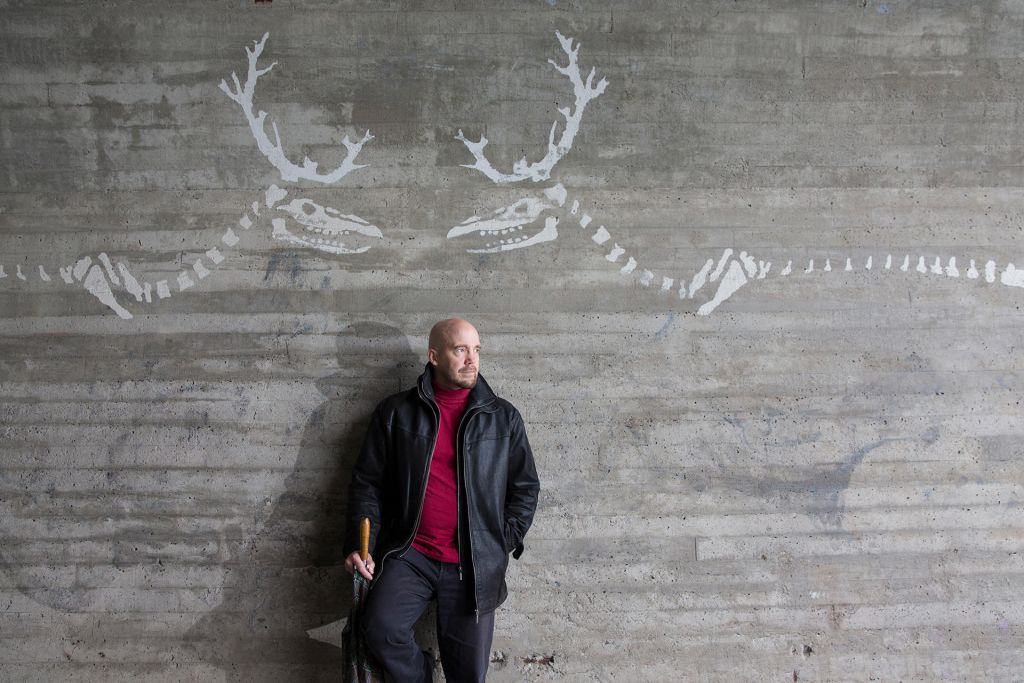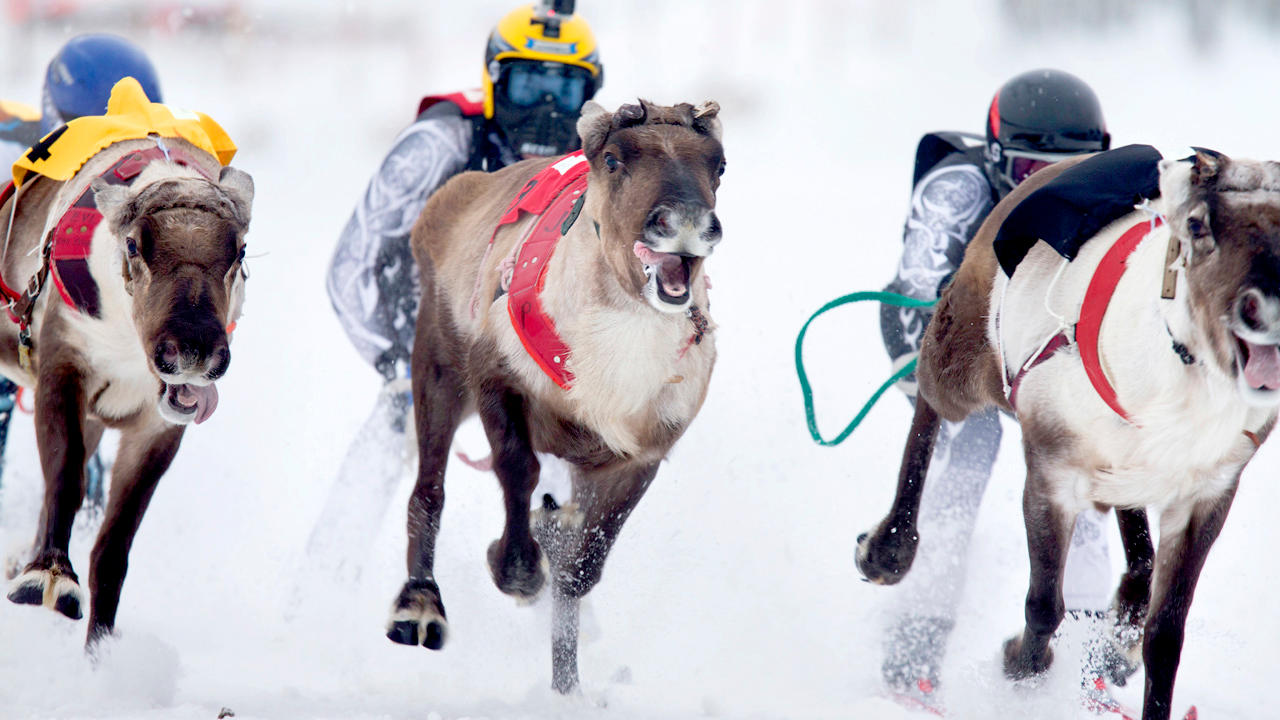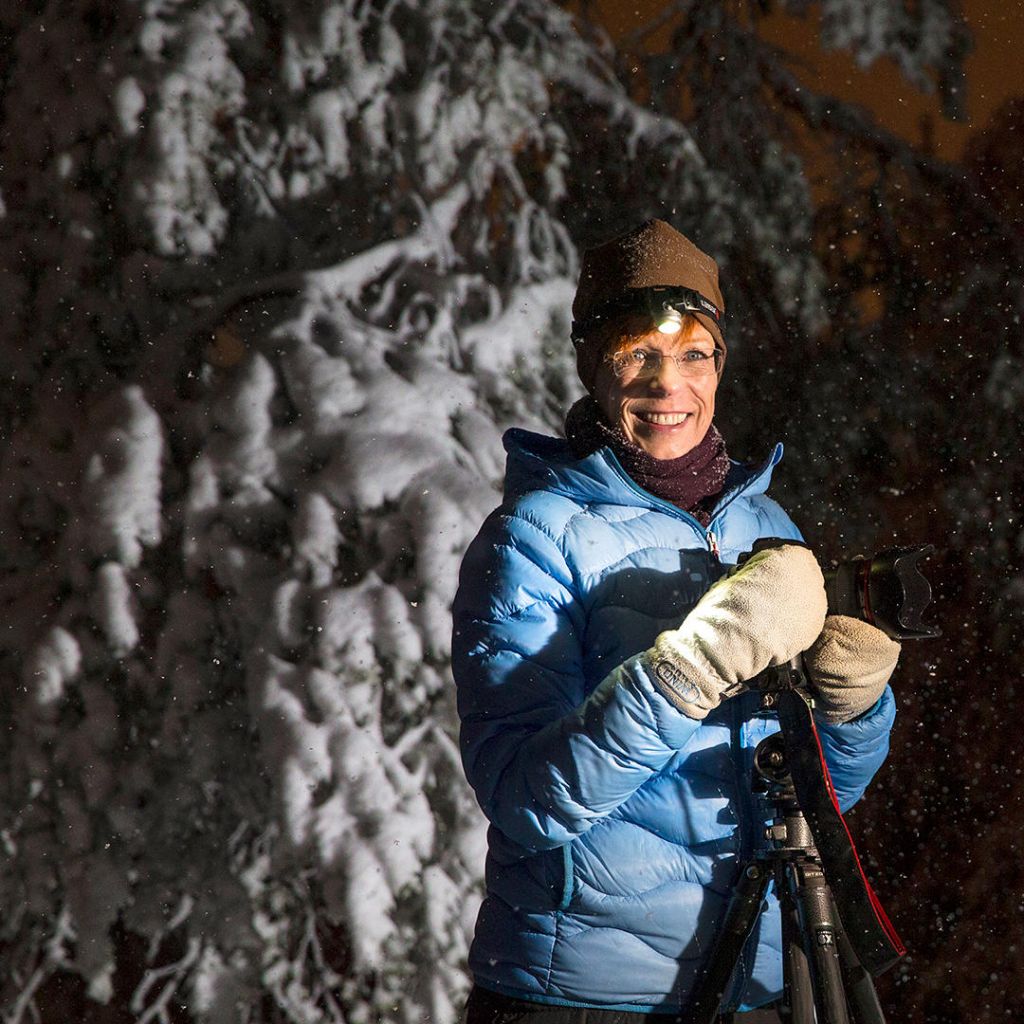We feature a new guest photographer every month, with their top 3 photo picks and professional tips for filming in Lapland. Our photographer of February 2018 is Kaisa Sirén, photojournalist from Rovaniemi.
I live in Rovaniemi, on the Arctic Circle. I work in Finnish Lapland as a freelance photographer. Most of my work I do for journalism and the media. In my free time, I do photography! Mostly wandering in the forests with my two dogs and the camera. So photography kind of takes up all of my life and my time.
Photography was very much present already in my childhood, as my mother was avid at it and also supported my hobby. I moved to Canada at the age of 17, and there decided to pursue a career as a photographer after high school. After having studied 4 years in Toronto, I moved back to Finland and worked at a newspaper in Turku, where I am from originally. Very soon after starting as a staff photographer for the newspaper, Turun Sanomat, I was sent to Lapland for a photoshoot. I met my future-husband during that trip. Very soon I found myself living in Lapland and working in the travel business, in my husband’s company. My photography career took a 15 year hiatus, but when I returned, I came back far stronger!
When continuing my career, it was immediately clear that I wanted to work in photojournalism. Nowadays I have approximately five photoshoots per week and they vary greatly in terms of length and subjects. And that is what makes this job so interesting. Mostly I photograph people, sometimes newsworthy happenings and venues, and most of time in fascinating locations. Each photoshoot is a great challenge, since you never know what the setting is or what kind of light exists. Most times the person to be photographed expects you to work rapidly which adds to the difficulty. You have to make quick decisions where to shoot, which light to use and at the same time build a respectful relationship with your subject. This is what makes my job the most interesting and each day a new adventure.
I have been very busy lately which is nice. But at the same time, I regret a bit that I do not have much time to do any of my own projects at the moment. I have held several photo exhibitions but not for some time. I trust that their time will come soon.
Here are my top 3 pics with tips:
1. Direct your subjects
When photographing people, it is important you have them relax in front of the camera. You have to take the lead role, speak with the person and have them relax. Most people expect guidance from the photographer, and if you have them doing something, the result often looks more natural.
Tip: I took this photo of many time world skijoring champions Vesa-Pekka Jurvelin and Kati Mansikkasalo-Jurvelin from Rovaniemi for the newspaper Helsingin Sanomat. Instead of a nice pose, I asked them to mess around with their dogs Redi and Batman and just to have a good time. I wanted to portray the equal relationship among the teammates, so I asked the couple to kneel down to the same level as the animals.
Don’t ask your subject to pose, rather have them do something. When the person is concentrating on an action, they forget the camera, and you get a much more natural shot. Most photos that work well in the media are those where the person is concentrating on something other than the camera. It is more likely to bring out the real personality of the person. But when photographing a person who is very used to the camera, an actor e,g, very intense camera contact may work the best.
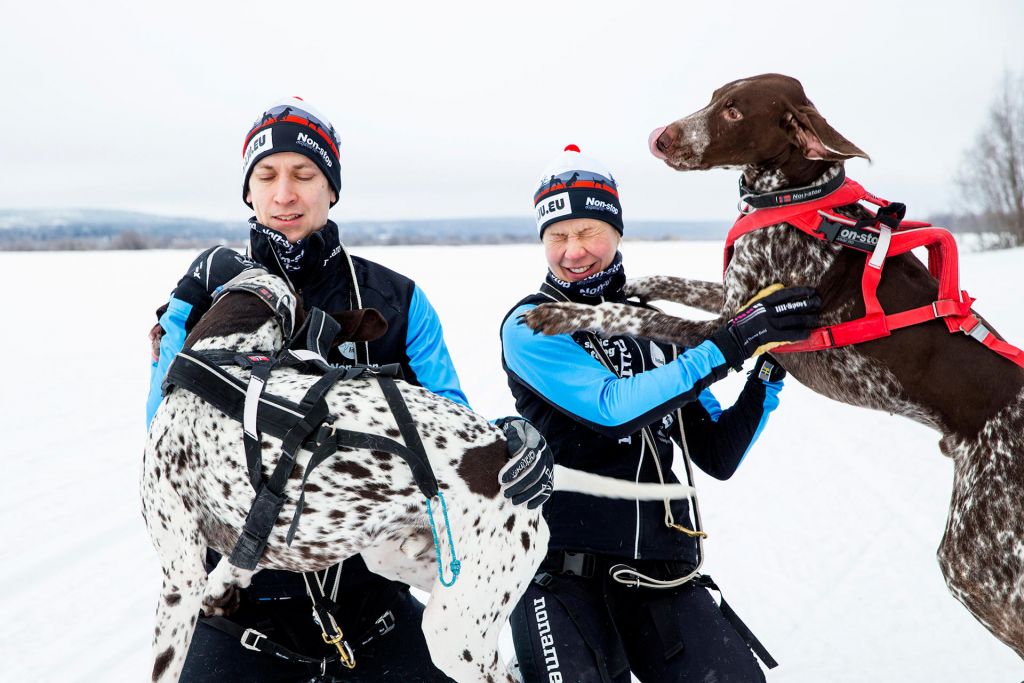
2. Build a close relationship with your subject, be brave about framing
Many times I go to do the photoshoot alone without the reporter. Then I wish to have a little talk with the person before starting to photograph. I need to build a rapport with my subject quickly; this way I can ask them to do and possibly show me things which may beyond their comfort zone. This time I did not need to persuade my subject to much to show me the most amazing thing. Mr. Sulo Karjalainen is very easily approachable and very proud to show his special relationship with his brown bear Juuso.
Tip: Try to understand the state of mind of your subject as quickly as possible. When relating with the person at their level, you can get the most out of them. Also remember to take many pictures at different angles and focal lengths. This way, you have more alternatives to support the story with the right image. Especially when photographing at a different time than the interview. At that stage you might not yet even know what point of view the story is going to take.
I took this picture of Sulo and Juuso for Helsingin Sanomat. Sulo has a very special relationship with Juuso, and the two are inseparable. They have been together over 20 years, ever since Juuso was born at the wildlife research center run by Sulo. I was first unsure about Sulo going inside the corral to have a chat with Juuso. After having introduced me to all other 5 bears at the center, he not only went to the corral himself but invited me to follow. Needless to say, I was very scared to be only 5 meters away from a 400 kg bear. But once I saw the bond between the two, I totally forgot one was a bear and just started to photograph. In the picture, I wanted to emphasize their relationship with close up and tight framing. My other alternative for the image was to take a wider shot and show the whole bear in the picture to emphasize its great size, but I decided that the special rapport between the two was more important. Juuso had only woken up from his winter hibernation 2 days earlier, and they had a lot to discuss. In between, Sulo gave him some apples I had brought, as well as some honey, his favourite delicacy.
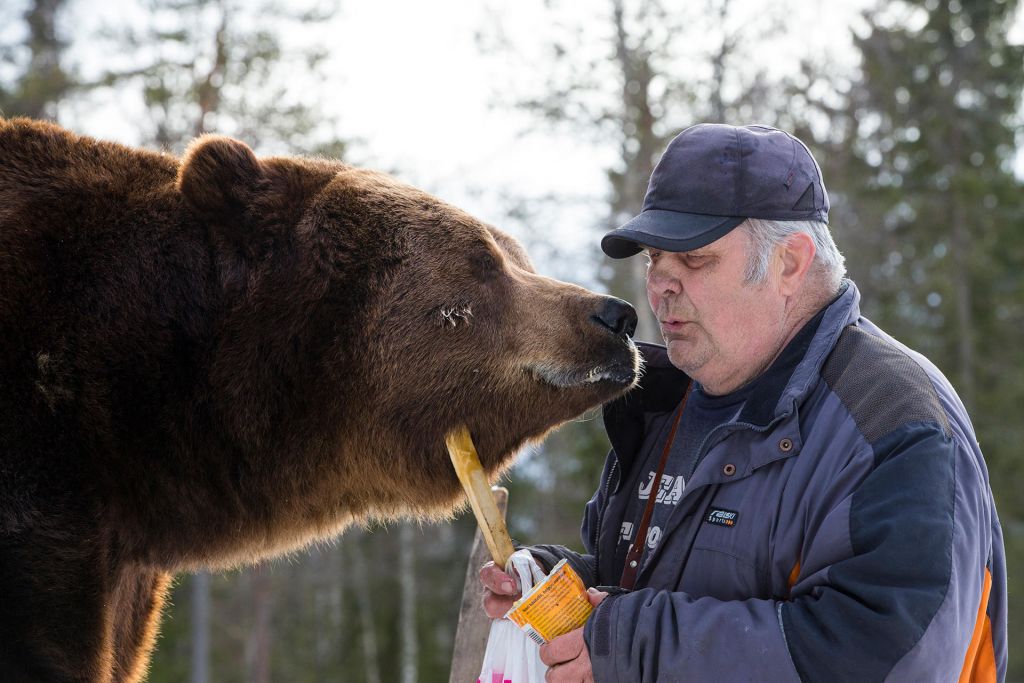
3. No Ordinary Locations
When I hear the topic of the story, I immediately start to think of a location which supports the message. Sometimes it is not possible to find a supporting location, but even then the message can be enhanced by lighting.
Tip: Take advantage of unusual locations and do location scouting even when unnecessary
This is a photo for Lapsen Maailma magazine, of author Pekka Jaatinen, who had recently published a novel about the drug use of the Finnish soldiers during the war in 1944. The subject of the novel was gloomy, and I wanted the location to be along the same lines. I remembered graffiti in an underpass in Rovaniemi, and there we did the shot. The skeleton of the graffiti portrayed the sad ending in the lives of the soldiers. But at the same time, as they were skeletons of reindeer, they brought that Lapland twist to the picture. I used an additional flashlight to enhance the natural light coming from the tunnel end.
Always look around for good locations and keep good notes of them. Also record when the light is most favorable in each place. It saves you a lot of time and effort in the long run when the locations are already familiar.
